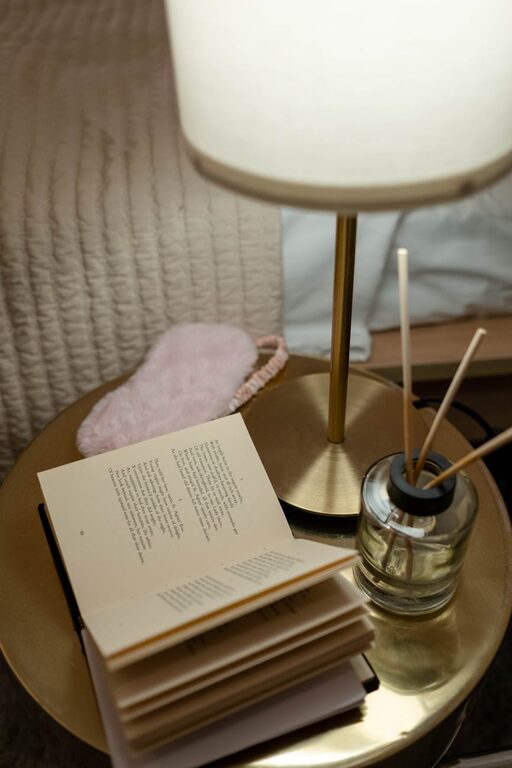How to Create a Relaxing Bedtime Routine for Better Sleep

Getting a good night’s sleep is essential for our physical health, mental well-being, and overall energy. One of the most effective ways to improve sleep quality is by establishing a relaxing bedtime routine. A thoughtful routine signals to your body and mind that it’s time to wind down, making it easier to fall asleep and wake up refreshed.
In this post, we’ll guide you through the steps to create your own calming bedtime ritual that suits your lifestyle. Whether you’re someone who finds it hard to switch off or just looking to improve your sleep habits, these tips can help.
Why a Bedtime Routine Matters
Before diving into the how-to, it’s helpful to understand why bedtime routines work. Our bodies operate on a natural cycle called the circadian rhythm, which tells us when to be alert and when to rest. Consistent bedtime rituals help regulate this rhythm by creating predictable cues for your brain that it’s time to sleep.
When you practice the same calming activities before bed, your body begins to relax naturally. This can lower stress levels, reduce anxiety, and improve sleep onset—the time it takes to fall asleep.
Steps to Create a Relaxing Bedtime Routine
1. Choose a Consistent Bedtime
Try to go to bed and wake up at the same time every day, even on weekends. Consistency strengthens your body’s internal clock and can help you fall asleep faster.
2. Wind Down 30-60 Minutes Before Bed
Give yourself a buffer period before sleep by turning off work-related tasks and screens. This helps your brain shift from active mode to relaxation mode.
3. Dim the Lights
Lowering the lighting signals your brain that nighttime is approaching. Consider using lamps or dimmable lights instead of bright overhead bulbs.
4. Limit Screen Time
The blue light from phones, tablets, and computers can interfere with melatonin production, the hormone responsible for sleep. Try to avoid screens at least 30 minutes before bed.
5. Engage in Calming Activities
Incorporate soothing activities that help your body relax, such as:
– Reading a book (preferably something light and non-stimulating)
– Listening to gentle music or nature sounds
– Practicing deep breathing or meditation
– Writing in a journal, focusing on gratitude or positive thoughts
– Taking a warm bath or shower
6. Avoid Heavy Meals and Caffeine Late in the Day
Eating heavy or spicy food close to bedtime can cause discomfort. Caffeine, including coffee, tea, and some sodas, can keep you awake. Try to avoid these at least 4–6 hours before sleeping.
7. Create a Comfortable Sleep Environment
Your bedroom should be cool, quiet, and dark to promote quality sleep. Investing in a good mattress, pillows, and blackout curtains can make a big difference.
8. Use Aromatherapy
Certain scents like lavender or chamomile have calming properties. Using essential oils in a diffuser or pillow spray may help you relax.
9. Set Up a Gentle Reminder
Sometimes a simple reminder on your phone or a sticky note can prompt you to start your routine on time, helping you stay consistent.
Sample Relaxing Bedtime Routine
Here’s an example to help you get started:
– 8:30 PM: Turn off screens and start dimming lights
– 8:40 PM: Take a warm shower or bath
– 8:55 PM: Sip on a caffeine-free herbal tea
– 9:00 PM: Do 5–10 minutes of light stretches or deep breathing
– 9:15 PM: Read a few chapters of a favorite book or journal
– 9:30 PM: Apply lavender essential oil to pillows or diffuse
– 9:35 PM: Lights out and time for sleep
Adjust the timing to fit your schedule, but try to keep the order of activities calm and steady.
Tips for Sticking to Your Routine
– Start small: Don’t try to change everything overnight. Pick a couple of calming activities and add more gradually.
– Be patient: Your body may take a few days or weeks to adjust to the new routine.
– Avoid naps late in the day: Long naps or those taken late afternoon can make it harder to fall asleep at night.
– Listen to your body: If something in the routine isn’t working, feel free to modify it. The goal is to feel relaxed, not stressed.
– Keep a sleep journal: Track how you feel in the morning and note what helps or hinders your sleep.
Final Thoughts
Creating a relaxing bedtime routine is a simple yet powerful way to improve your sleep quality and overall wellness. By establishing consistent, calming rituals tailored to your preferences, you can prepare your mind and body for restful nights. Start with small steps, be consistent, and soon you’ll notice a positive difference in how you feel each day.
Sweet dreams!




